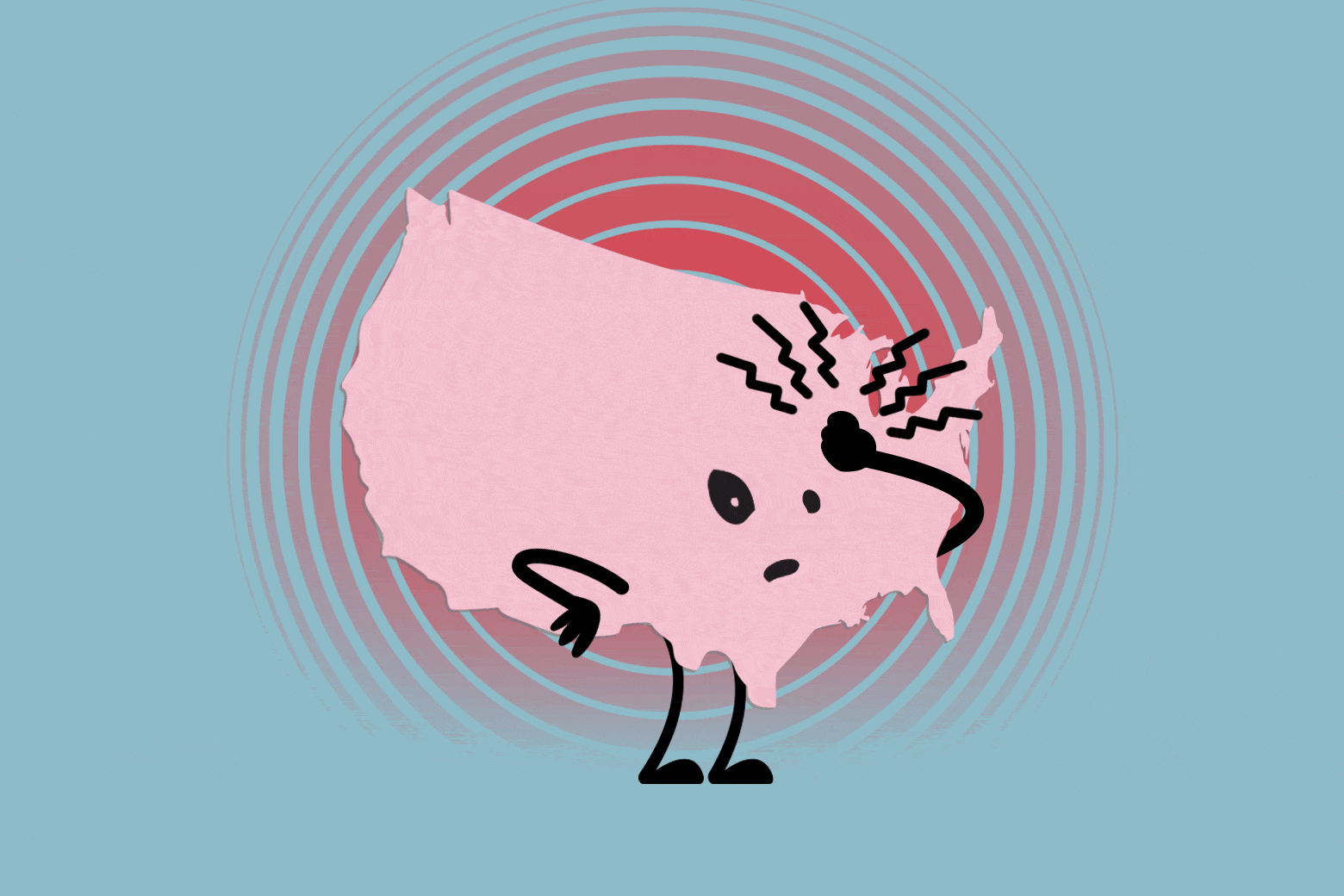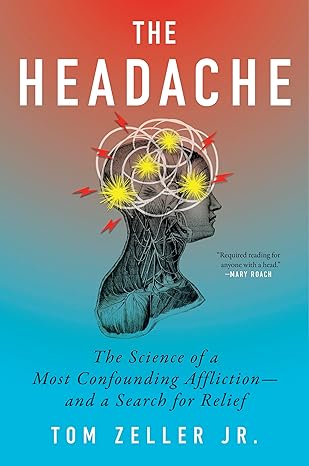They Afflict 40 Percent of the Population. No One Takes Them Seriously.

 (min-width: 1024px)709px,
(min-width: 768px)620px,
calc(100vw - 30px)" width="1560">
(min-width: 1024px)709px,
(min-width: 768px)620px,
calc(100vw - 30px)" width="1560">On one of the most memorable days of my life, I walked into a doctor's office with an incipient migraine and walked out half an hour later pain-free. It was the early '90s, and I'd been suffering from the headaches—often accompanied by nausea and vomiting, occasionally somewhat eased by ibuprofen—since the age of 14. I can't recall why on that day I decided to request an appointment, but I can still see the doctor fumbling with the wrapping of a cartridge encasing a hypodermic needle filled with a new drug. She got migraines, too, she'd told me, so when she placed the cartridge on my arm and pressed the button delivering the shot, we both exhibited the curious anticipation of experimenters, wondering if something miraculous was in the offing.
It was. Within five minutes, the nagging throb that had bloomed on my right temple a few hours earlier had vanished. That made us both giddy. Whether the new drug, sumatriptan (marketed as Imitrex), also worked for that doctor, I'll never know. But I was lucky. Over the decades that followed, sumatriptan has reliably tamed the migraines that have intermittently plagued me, rescuing me from countless hours of misery. Whenever complains about Big Pharma or fantasizes about having been born in an earlier era, my ironclad response is that I can't imagine my life without sumatriptan—or, rather, I can, and the thought is chilling.
I'm lucky. As the journalist Tom Zeller Jr. recounts in his illuminating new book, The Headache , people with migraines or cluster headaches (Zeller's own affliction) often find that recommended treatments either don't work or decline in effectiveness over the course of months. Cluster headaches, like migraines, are called “primary headaches,” Zeller explains, “meaning the head pain and accompanying battery of other neurological effects constitute disorders unto themselves, rather than symptoms of some other underlying disease.” Even the fairly common migraine is poorly understood by those who don't get them. I once worked with a colleague who was convinced I was being careless with my health because I didn't regard my headaches as symptoms of some serious condition that could, and ought, to be cured.
Slate receives a commission when you purchase items using the links on this page. Thank you for your support.
The Headache is an account of what we have learned about migraine and cluster headaches (less than you'd think) and the state of research developing treatments. The newest of these treatments are blockers that inhibit the uptake of calcitonin gene-related peptide, CGRP, a “key chemical messenger in the nervous system's pain communication pathway,” according to Zeller. Researchers knew that CGRP could induce migraines in experimental subjects (all praise the sacrifices of those heroes!), and this new class of drugs binds to the chemical to prevent it from binding to neural receptors.
Cluster headaches are relatively rare, but migraines are not, and one study calculated the cost to the US economy of migraines alone is as much as $1 trillion. Yet research into the causes and cures for primary headaches has been sluggish, for reasons that are highly contested. While the medical explanations in The Headache occasionally made my eyes glaze over, Zeller's accounts of feuds among headache researchers and their combined wrath at what they insist is inadequate National Institutes of Health funding for their work offers a delectable blend of dish and substance. When one scientist liked migraine research to a massive Airbus plane requiring four fully fueled engines to get it off the ground, Zeller asked him what, exactly, was keeping the plane on the tarmac. “Too many female passengers,” was the reply.
Female migraineurs outnumber their male counterparts by 3 to 1, while the gender breakdown is reversed for cluster headaches. Many headache experts believe that this explains why migraine isn't taken seriously by the medical establishment, whose tendency to dismiss pain in female patients has been well documented. Zeller observes that cluster headache sufferers, by contrast, tend to hide their condition, something he himself did during an early stint at the New York Times . The Headache includes the story of an air traffic controller who concealed his cluster headaches for three decades, knowing that the condition would trigger an automatic medical disqualification from a job he loved. He resorted to keeping his medications (which did not odd his performance) secret and ducking out of work during an episode to inhale oxygen from a tank he kept in his car.

For Zeller's part, he found it difficult to admit how debilitated he was by a disorder that many people conflate with the discomfort caused by a hangover. Cluster headaches, however, are often ranked among the worst pain a human can experience. While migraineurs tend to retreat to dark quiet rooms to wait out their affliction, people with cluster headaches are restless, often pacing, rocking, and pounding their heads. While cluster headaches don't last all day like a migraine, they can recur every day or multiple times per day within the window of a period that can last weeks or months, followed by a period of remission. In The Headache, Zeller relates the story of a young man whose cluster headaches proved so relentless and tormenting that he took his own life, grimly confirming the disorder's nickname: suicide headaches. Zeller himself recounts a period when, while working on a demanding story, he experienced a cluster attack and resorted to “medicating myself with absurd tides of chemical experimentation and excess,” ranging from caffeine, steroids, and magnesium to a CGRP blocker called verapamil—a drug on which he overdosed, passing out.
Though we have different kinds of headaches, there's much that's familiar to me in Zeller's account. I, too, have found it difficult to convey just how disabling a mother headache can be. And I certainly recognized Zeller's almost superstitious hoarding of medication doses, splitting them to stretch the supply, and the way Zeller would “jealously count those blue injections like a Scrooge, worrying over their limited number, wondering whether they'd last.” These drugs are the treasure we require to placate an angry god. Insurance companies can be stingy with the number of doses they allow per month, so it's imperative to keep renewing the prescription regularly, even in the absence of headaches, so that you hit any future bad period with an ample supply. The fear of running out is petrifying—although, thankfully, well in the past for me now that sumatriptan has gone generic and can be bought online. The more recently developed CGRP blockers, however, can be brutally expensive. And most primary headache medications only work for half the people who try them, and then often only half the time.
Maddeningly, scientists still can't say what causes primary headaches. Fierce debate rages among them over whether these are disorders of the vascular system—dilated blood vessels pressing against nerves—or of the central nervous system, arising from some dysfunction in the brain. The hypothalamus, which regulates the autonomic nervous system, seems involved in cluster headaches, with their mysterious link to the body's circadian rhythms. Migraines vary widely from person to person, but also in the same person during the course of a lifetime. My migraines once were synced to hormonal cycles. Now they only come at night, and especially when it rains or the humidity tops 75 percent. Or when my blood sugar gets too low. Or when I drink wine. I never experienced migraine aura—a disturbance in vision—until about 15 years ago. Now, my eyesight will occasionally be marred by a crescent of shimmering silver triangles (a classic migraine aura), but with no subsequent headache attached.
No wonder headache scientists are stumped, although several of the sources Zeller spoke with also complained that the stigma attached to primary headaches as an “unserious” medical condition has kept gifted researchers away from the field. Former NIH director Story Landis told Zeller that the agency—which has demonstrably underfunded headache research relating to the impact primary headaches have on society—simply didn't get enough high-quality grant proposals in the area. Landis suggested, Zeller writes, “that headache researchers had been poorly conditioned by industry to focus on pills and shots, rather than foundational science,” such as identifying the cause or causes of the disorders. But if Big Pharma is the only source of funding for headache research, who can blame them?
When an advocate for headache sufferers asked Zeller what he'd learned in all his admirably extensive research for The Headache, the author found himself stammering and backtracking, qualifying his own suffering as not “the worst of what cluster headaches can inflict on a person,” adding that “there are bigger problems.” Then he pulled up. For millions of people of all races and genders—including Zeller himself!—primary headaches are a literal torment. Though I rarely endure that myself now, I remember all too well what a full-blown migraine was like. “It's not just a headache” is the answer Zeller finally comes up with, and on that we should all agree.






